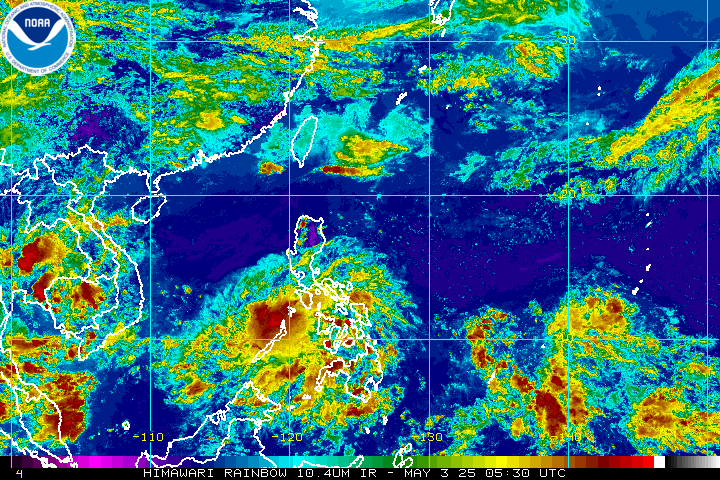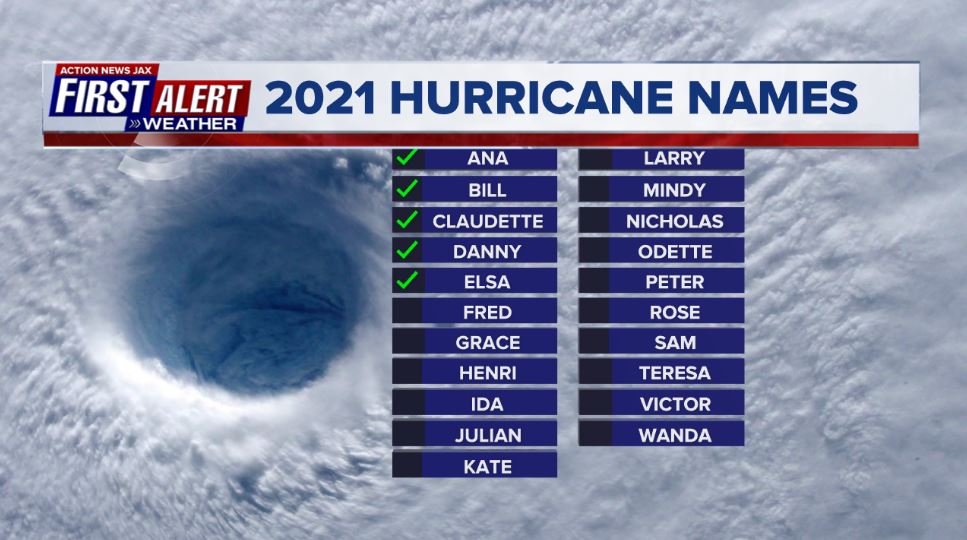Jacksonville, Fl. — The “Buresh Bottom Line”: Always be prepared!.....First Alert Hurricane Survival Guide... City of Jacksonville Preparedness Guide... Georgia Hurricane Guide.
STAY INFORMED: Get the * FREE * First Alert Weather app
FREE NEWS UPDATES, ALERTS: Action News Jax app for Apple | For Android
WATCH “The Ins & Outs of Hurricane Season”
WATCH “Preparing for the Storm”
READ the First Alert Hurricane Center “Survival Guide”
***** ALWAYS CHECK & RE-CHECK THE LATEST FORECAST & UPDATES! *****
Weak low pressure continues east of Florida. There’s been very little change in the overall organization. In fact, if anything, there’s less convection early Sunday. But convection will likely wax & wane with at least somewhat of a diurnal cycle & W/NW shear ensuring convection remains mainly to the east & southeast of the “center”. With a narrow ridge to the north/northwest beneath a departing upper level trough, forecast models are in general agreement & have trended more northwest taking a weak low or maybe a simple open surface trough into Northeast Florida Sunday night-Monday. But any sudden burst of t’storms - which is quite possible - may very well result in an upgrade this day & age from the NHC.
Bottom line folks: this will be a weak system! With the circle so close to Fl., there are some knee jerk reactions, but this just doesn’t look like much of a problem for any of Fl. or the Southeast U.S. coast. For Jacksonville/NE Fl./SE Ga.:
* breezy east/northeast winds creating dangerous rip currents at area beaches into Monday though winds should subside Monday, become variable & then more southerly or SW as the trough moves inland.
* in combination with a full moon, higher than avg. tides causing minor, localized flooding at some parts of the coast & intracoastal + along the St. Johns River & its tributaries
* at least some uptick in showers, a few t’storms later Sunday night/Monday
The weak low has been a product of a weakening upper level trough over the Eastern U.S./W. Atlantic. While conditions (shear especially, out of the W/NW 20-30 mph) are not particularly favorable for much development, close proximity to the Gulf Stream makes forecasters a little more wary of potential development. As the narrow upper level ridge builds to the north, the low will drift northwest & is likely to degenerate into a stretched out trough of low pressure by Monday or so while moving inland. Again - I do not expect this low to be a strong system but rainfall will increase across Fl./Ga. & nearby areas through early in the week.





An interesting “blob” of convection has developed north of Puerto Rico & east of the Bahamas & appears tied to the tail end of the weakening upper level trough over the W. Atlantic combined with a surface trough. Forecast models don’t show much, but we’ll need to see if the convection might persist followed by surface low pressure.

Saharan dust. Dry air - yellow/orange/red/pink - is extensive over the Caribbean & Central & Eastern Atlantic. Such widespread dust is common early in the hurricane season - through July - & is indicative of dry air that can impede the development of tropical cyclones. However, sometimes “wanna’ be” waves will just wait until they get to the other side of the plume then try to develop if everything else happens to be favorable.
2021 names..... “Fred” is the next name on the Atlantic list (names are picked at random by the World Meteorological Organization... repeat every 6 years... historic storms are retired (Florence & Michael in ’18... Dorian in ’19 & Laura, Eta & Iota in ‘20). Last year - 2020 - had a record 30 named storms. The WMO decided beginning in 2021 that the Greek alphabet will be no longer used & instead there will be a supplemental list of names if the first list is exhausted (has only happened twice - 2005 & 2020). More on the history of naming tropical cyclones * here *.


East Atlantic:



Mid & upper level wind shear (enemy of tropical cyclones) analysis (CIMMS). The red lines indicate strong shear which is widespread from the Gulf of Mexico & Caribbean eastward across much of the Atlantic:
Water vapor imagery (dark blue indicates dry air):
Deep oceanic heat content is slowly increasing across the SE Gulf, Caribbean & deep tropical Atlantic:
Sea surface temp. anomalies:

SE U.S. surface map:
Surface analysis centered on the tropical Atlantic:

Surface analysis of the Gulf:
Caribbean:
Atlantic Basin wave forecast for 24, 48 & 72 hours respectively:




The E. Pacific has gone quiet now....

In the W. Pacific.... broad-eyed typhoon “In-Fa” is moving ashore just south of Shanghai, China.
A second system - “Nepartak” - has developed over the W. Pacific along a broad surface front & looks to impact Japan by the middle of next week but is not expected to be a strong storm. Nonetheless, some heavy rain may affect the Olympic games by Tue./Wed. depending on the location & intensity of Nepartak which appears to be headed for areas north of Tokyo which would likely keep the heaviest rain & strongest winds to the north of Tokyo.




Global tropical activity:

Cox Media Group
"low" - Google News
July 25, 2021 at 08:59PM
https://ift.tt/3fcYtEr
Talking the Tropics With Mike: Low pressure near Florida remains weak - WOKV
"low" - Google News
https://ift.tt/2z1WHDx
Bagikan Berita Ini















0 Response to "Talking the Tropics With Mike: Low pressure near Florida remains weak - WOKV"
Post a Comment